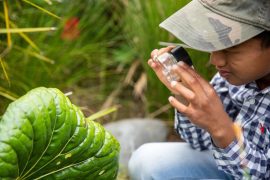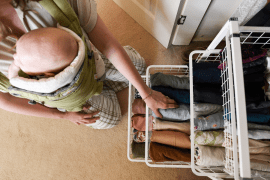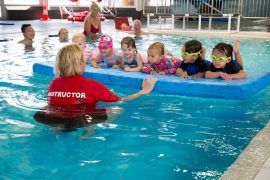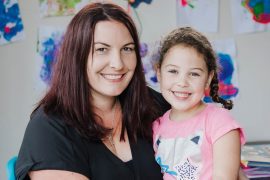What are the benefits?
There are many benefits to this approach to learning. They include the following, among others.
1. Foster a love of learning:
“The science of play is validating what gifted educators such as Alice Meckley, Ph.D., Vivian Paley, Sharna Olfman and Kathy Hirsch-Pasek have long been practising and advocating. When students have fun at learning, they continue to pursue it for its own sake. It is how nature assured us how to learn about the world and our places in it. At any age, play acts to retain and enhance meaningful context, and optimises the learning process. All gifted parents, master teachers, and wise executives know this.” (source)
2. Grow the brain:
“Play is not frivolous: it enhances brain structure and function and promotes executive function (ie, the process of learning, rather than the content), which allow us to pursue goals and ignore distractions.” (Source)
3. Encourage movement for good health:
“Unstructured materials, often called loose parts, encourage child-led play, and therefore may also promote physical activity.” (source)
If you’ve been doing something else, how do you transition to child-led learning?
If a child has been in a traditional school system for any period of time, he or she will likely be accustomed to teacher-led instruction wherein very little, if any, input from the child was incorporated into the lesson plans.
This child may need a period of de-schooling, or more simply stated, time to unwind from the prior approach and transition to this new method.
Keep in mind that even radical unschoolers are still educating their children, be it through teaching them to cook, do chores, and participate in the economy. There are plenty of lessons to be learned from regular day-to-day life.
To get started, it may be beneficial to emphasise outings and experiences to continue, or perhaps foster, a love of learning. Rather than using worksheets or manuals about the child’s interests (unless, of course, he or she genuinely wants to use them), activities where learning happens more organically can prove beneficial. Examples would include trips to museums, cultural centres, or if possible, travel. Younger children, in particular, can learn in nearly any setting at all if adults are helping them engage with their surroundings. Engaging can simply mean observing the environment if the child is disinclined to jump into something new.
What does child-led learning look like day to day?
It’s helpful to take an interdisciplinary and holistic view of child-led learning. You may or may not dedicate specific time each day for any semblance of formal teaching.
For a young child:
Using the cooking, chores, and economy examples from above, it might manifest like this. The child wants to host a lemonade stand on a warm summer day. The adult might use this as an opportunity for reading (recipe, ingredients), math (measuring and proportions), science (cleaning and not leaving germs), and finance (price setting), art (making a sign), and so on.
For an older child:
The child wants to play a computer game.
The adult’s job here is to ensure the child has access to games that help grow the mind rather than hinder it.
From there, the adult can explore the child’s interest in, for example, making his or her own computer games. Coding is a great way to take this type of “play” to the next level. If the child’s interest is simply in playing the games, even that may prove beneficial. (source)
Further, regardless of the child’s age, it’s important to remember that learning isn’t linear. Although a workbook might suggest that a child should learn page 2 before moving onto page 3, for example, real-world experience tells us that it doesn’t always work that way. A child might grasp the concept of positive and negative numbers, for instance, before being able to count to 20 on his or her own. This is perfectly natural.
Can you use curriculum alongside child-led learning?
Absolutely, yes. Just because you’re following child-led learning doesn’t mean you can’t use tools to guide you. Although some curriculum are certainly structured and linear, others offer the parent and child learning resources that are much more flexible, wherein children can learn modules at their own pace and in whatever order works best for them.
Interests can become passions in child-led learning.
To be clear, teachers in traditional and non-traditional settings are invaluable. There’s no single one-size-fits-all to education, but there should be universal gratitude to all who invest in children’s futures. To the extent that we can encourage our children to enjoy what they’re learning, regardless of method, it will almost certainly correlate to their level of engagement with the subject matter.
Originally published here.
Sarah R. Moore is a published writer and the founder of Dandelion Seeds Positive Parenting. You can follow her on Facebook, Pinterest, and Instagram. Certified by the Raffi Foundation for Child Honouring, she works alongside bestselling author Elizabeth Pantley. She also spent a year observing Teacher Tom, a leading practitioner of ‘democratic play-based’ education. Her glass is half full.










